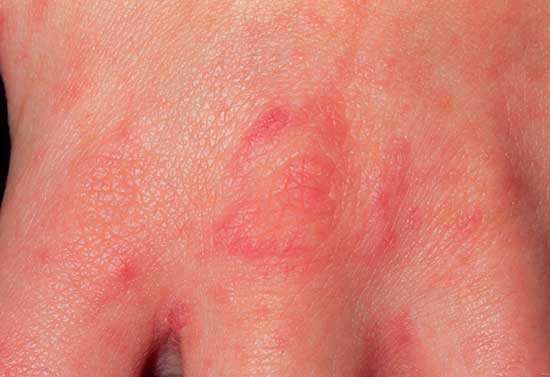About scabies
Scabies is a skin condition caused by an infestation of tiny mites called Sarcoptes scabiei. The infestation happens when female scabies mites burrow under the surface layer of the skin and lay their eggs in the small tunnels that form as they burrow.
Scabies usually spreads through skin-to-skin contact. It can also spread through contact with contaminated objects like clothes and bedding.
Scabies is common in preschoolers and school-age children because they often come into close contact while playing. But it can also spread to adults, including elderly relatives. This is why there are often outbreaks in kindergartens, schools and nursing homes.
Symptoms of scabies
Scabies usually shows up as threadlike ‘tracks’ or as lumps or pus-filled blisters. On children with dark skin, the tracks and lumps might look brown, purple or grey. On children with light skin, the tracks and lumps might look red.
In children and teenagers, the tracks and lumps appear especially between the fingers and toes, on wrists and elbows, in the armpits, around the belly button and groin, and on the buttocks.
In babies, a rash often appears on the palms of the hands and soles of the feet. The rash might look like little blisters or pimples. Some babies might get a rash on their cheeks, neck and scalp. Or they might have thick, crusted areas on the affected skin.
Scabies is extremely itchy, especially at night, or after a hot bath or shower. When children scratch the itchy skin, they can sometimes get secondary infections. If this happens, the skin might be painful, have yellow crusting and appear red in light skin or grey in dark skin.
It can take up to a month after infection for the rash to appear.

Medical help: when to get it for children with scabies
See your GP if you think your child might have scabies.
You should also take your child to the GP if you’re not sure what’s causing your child’s rash.
Tests for scabies
Your GP will look at your child’s skin with a magnifying device to diagnose scabies. Sometimes they might take skin scrapings to confirm the diagnosis.
Treatment for scabies
Scabies spreads very easily, so your child must stay at home until treatment is completed.
Your GP, specialist doctor or pharmacist will recommend a lotion or cream (usually 5% permethrin cream). This will need to go on your child’s skin, avoiding the mouth and eyes.
For younger children, you’ll need to apply the cream. Older children and teenagers can apply the cream themselves. Here’s what to do:
- Start with a lukewarm bath or shower. Dry the skin gently.
- Apply the cream. Make sure the cream gets into all folds and creases on the body.
- Cover the skin thoroughly, particularly the genital area.
- Don’t wash the lotion or cream off for 8-12 hours. If your child washes their hands during the treatment period, the cream needs to go on their hands again.
- Wash the body thoroughly 8-12 hours after applying the cream.
Wait 7 days then do this treatment one more time. If you think these treatments haven’t helped, see your health professional.
The itch can take up to 6 weeks to go away. This is usually because of an allergic response, not ongoing scabies. Treat the itch with moisturiser, antihistamines or both. If the itch doesn’t go away with this treatment, your health professional might recommend a corticosteroid cream.
Your child might need antibiotics if they get a secondary infection because of scratching.
You should also wash all your child’s clothing, sheets, towels and soft toys, using the hottest wash cycle setting. Dry the clothes and bedding on the hottest setting of your clothes dryer, if you have one. This will destroy the mites and their eggs. If there are things you can’t wash, leave them closed in a plastic bag for at least 7 days.
Vacuum all carpets and mattresses.
Preventing the spread of scabies
You can’t prevent an initial infection of scabies, but you can stop scabies from spreading through your family.
Prevent the spread of scabies by washing everyone’s sheets, towels, clothes and soft toys.
Treat all family members with the lotion or cream at the same time, even if only one child is affected.
If adults or older children in your family would prefer to be treated with oral medicine, you can ask your health professional whether it’s appropriate for your family.
It’s best to keep your child home from child care, kindergarten or school until they’ve finished 2 treatments. But ask the school or child care centre how long they’d prefer scabies-affected children to stay away.